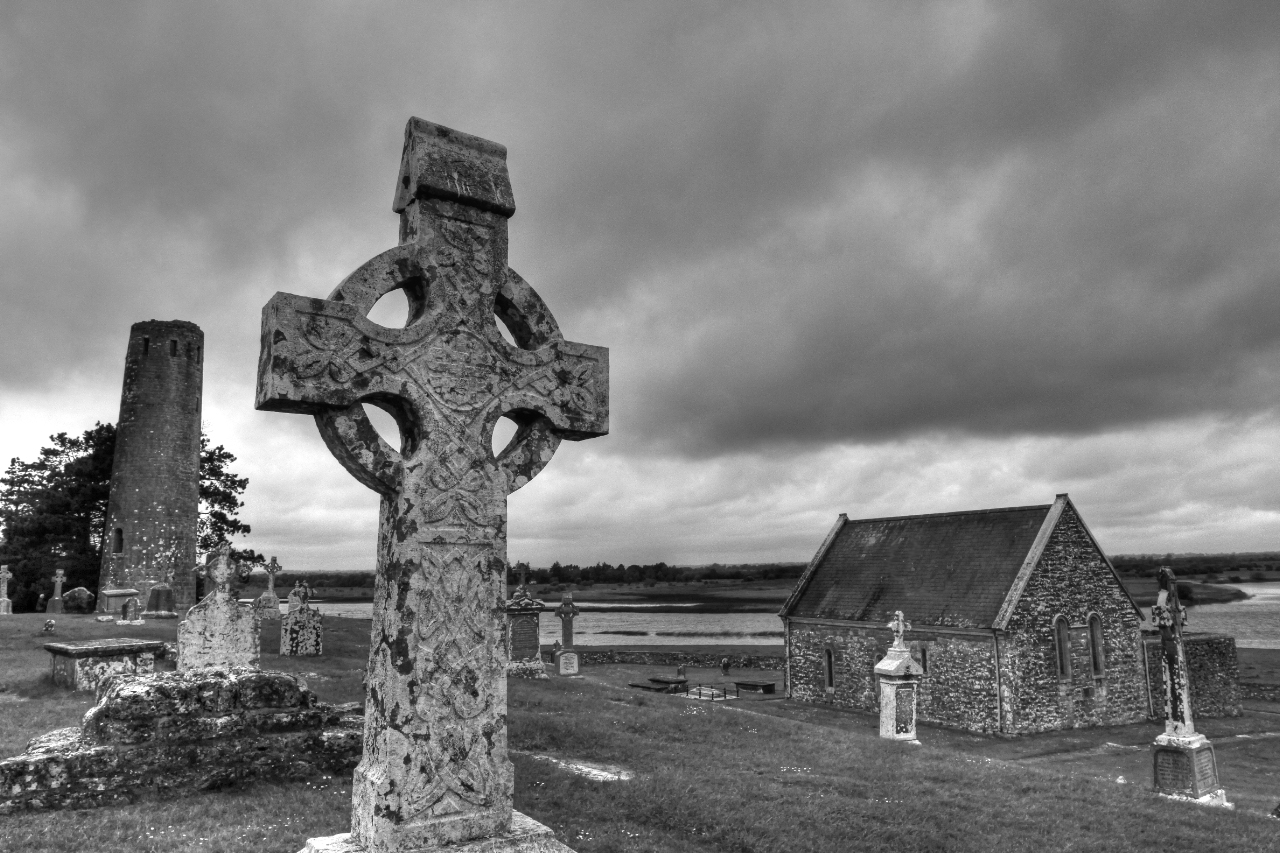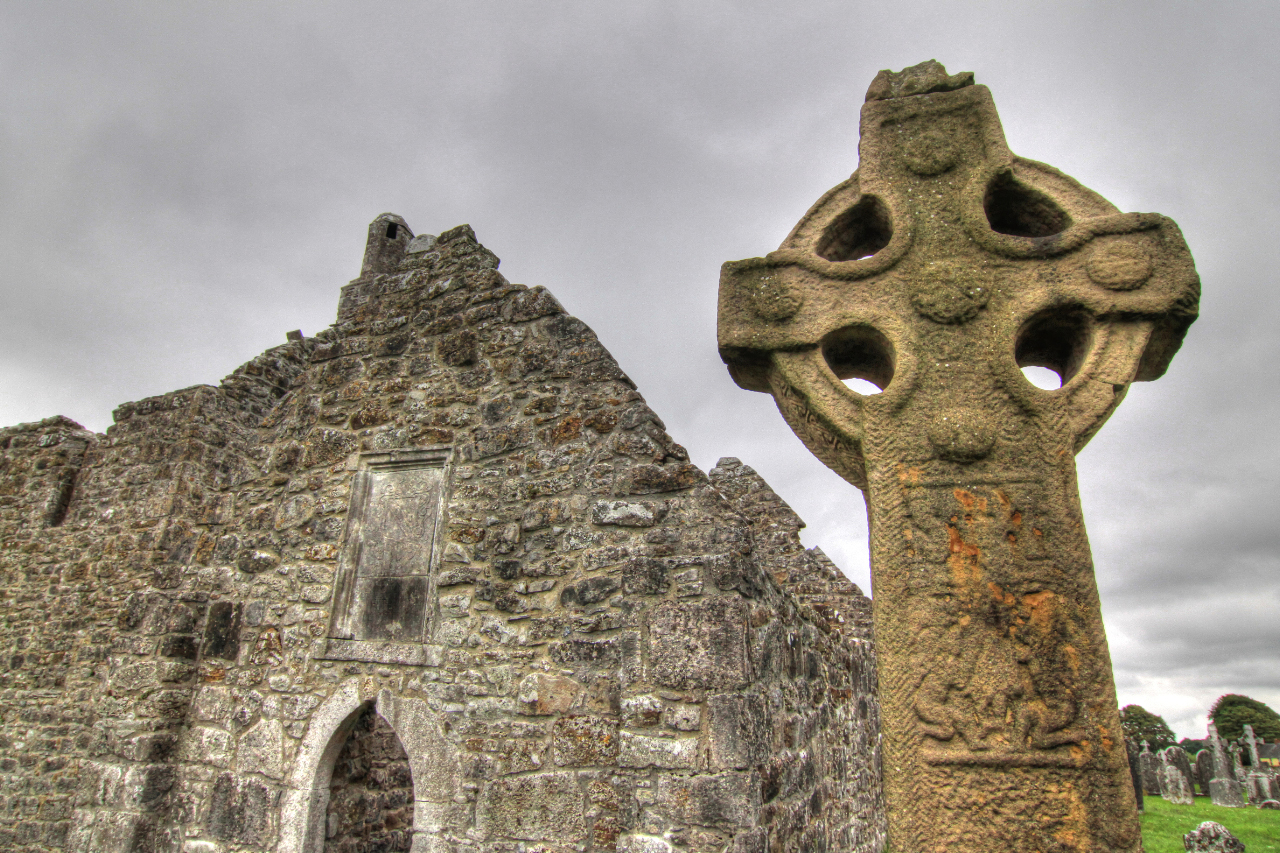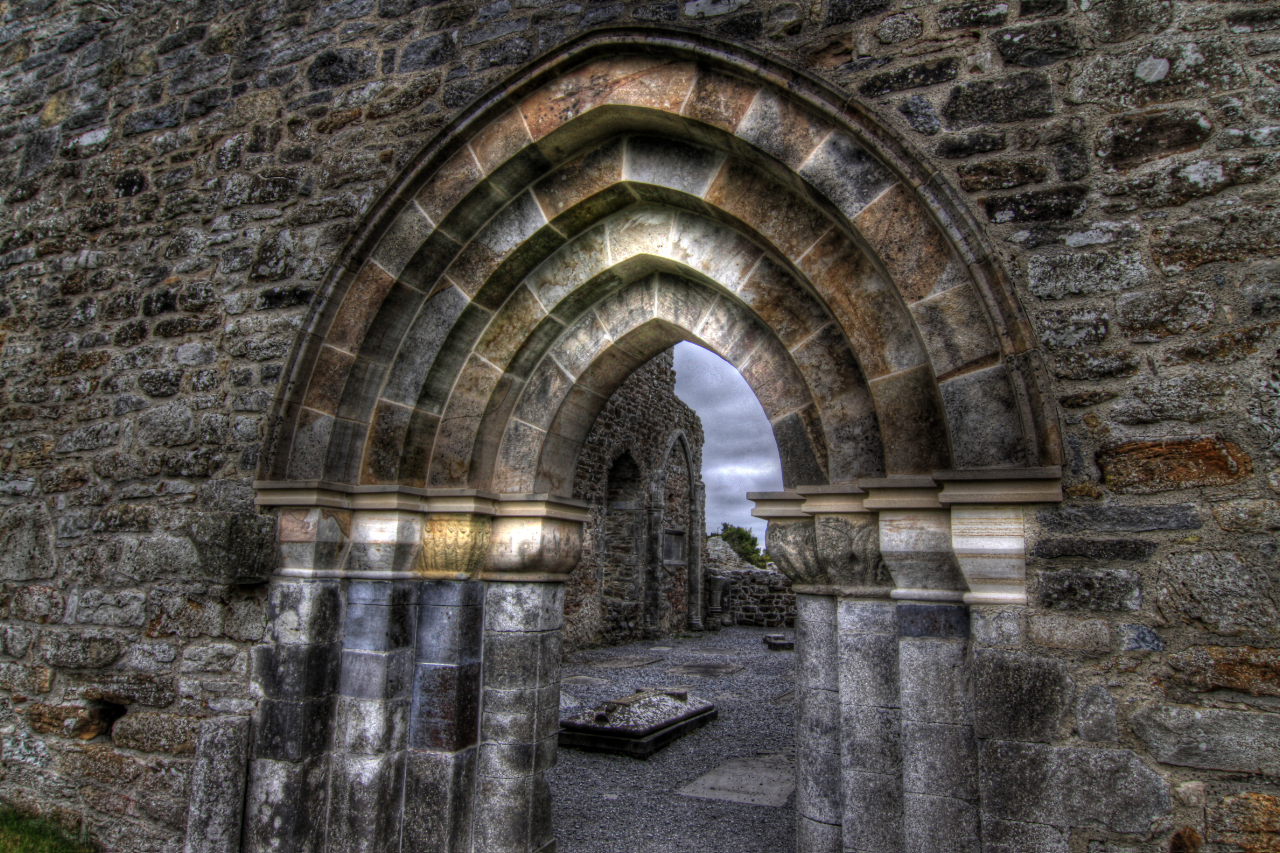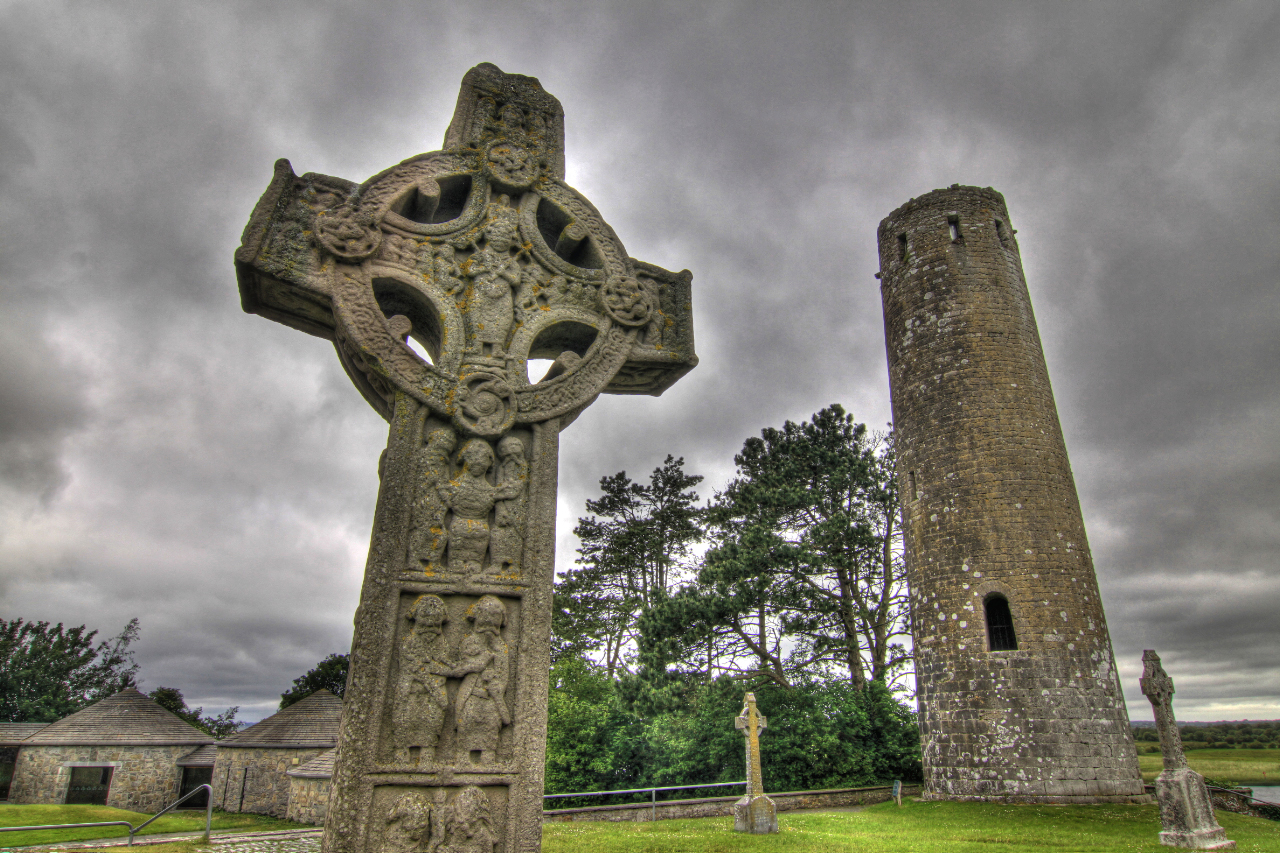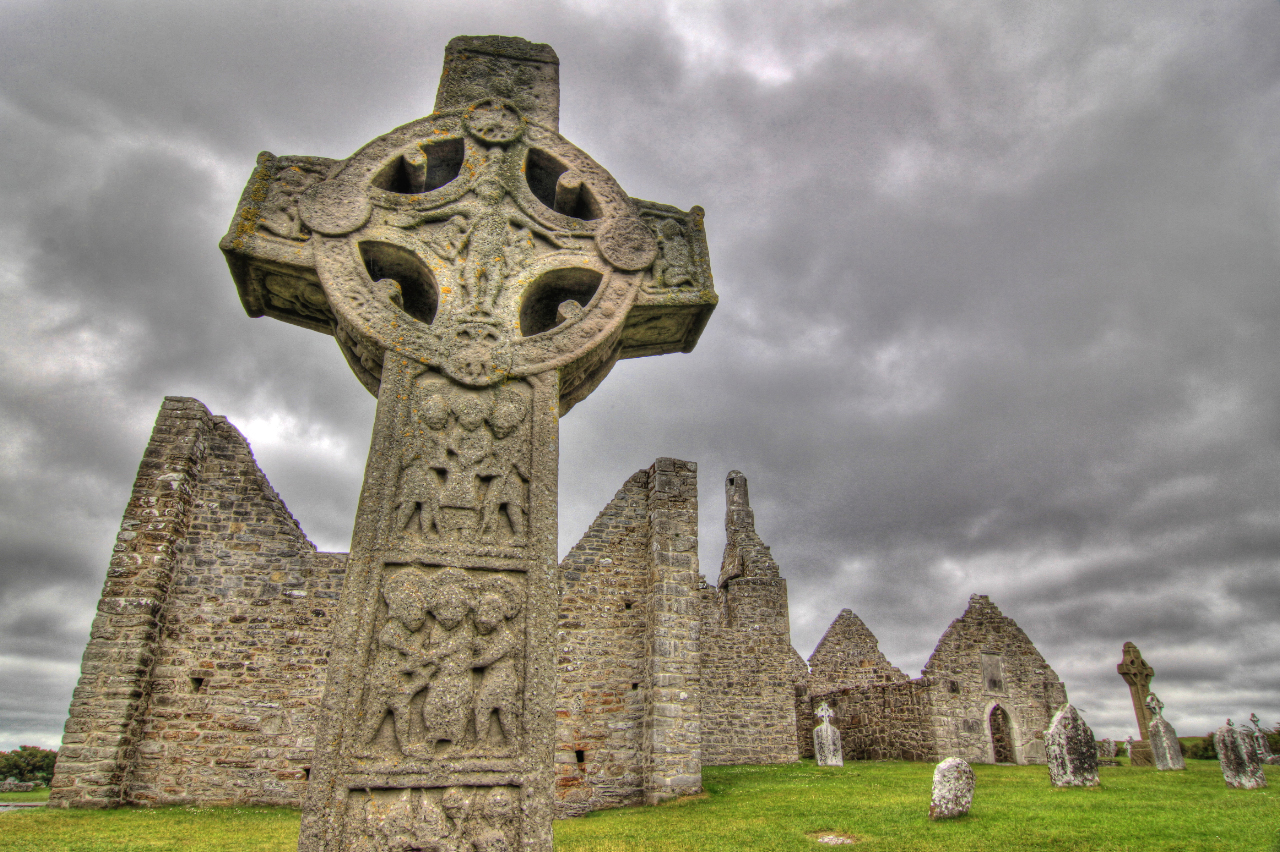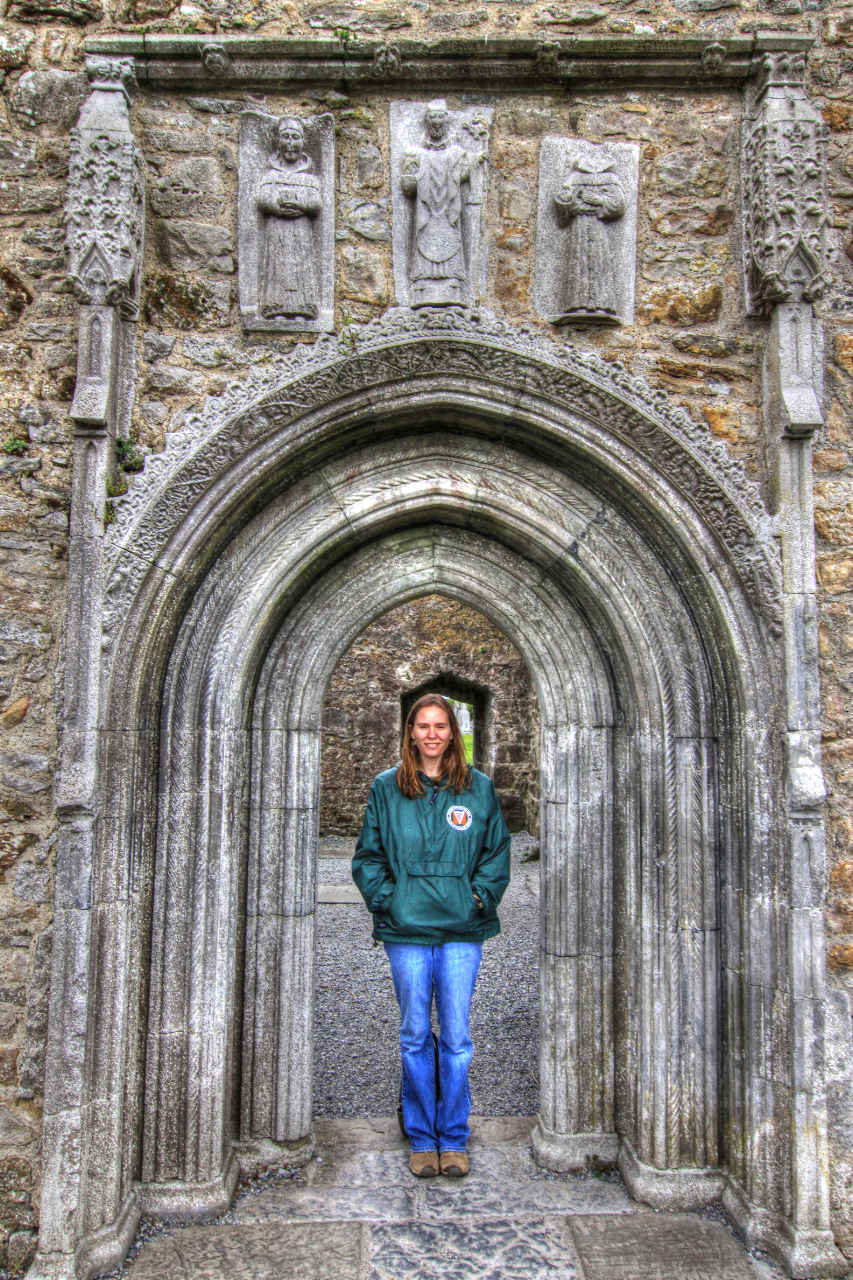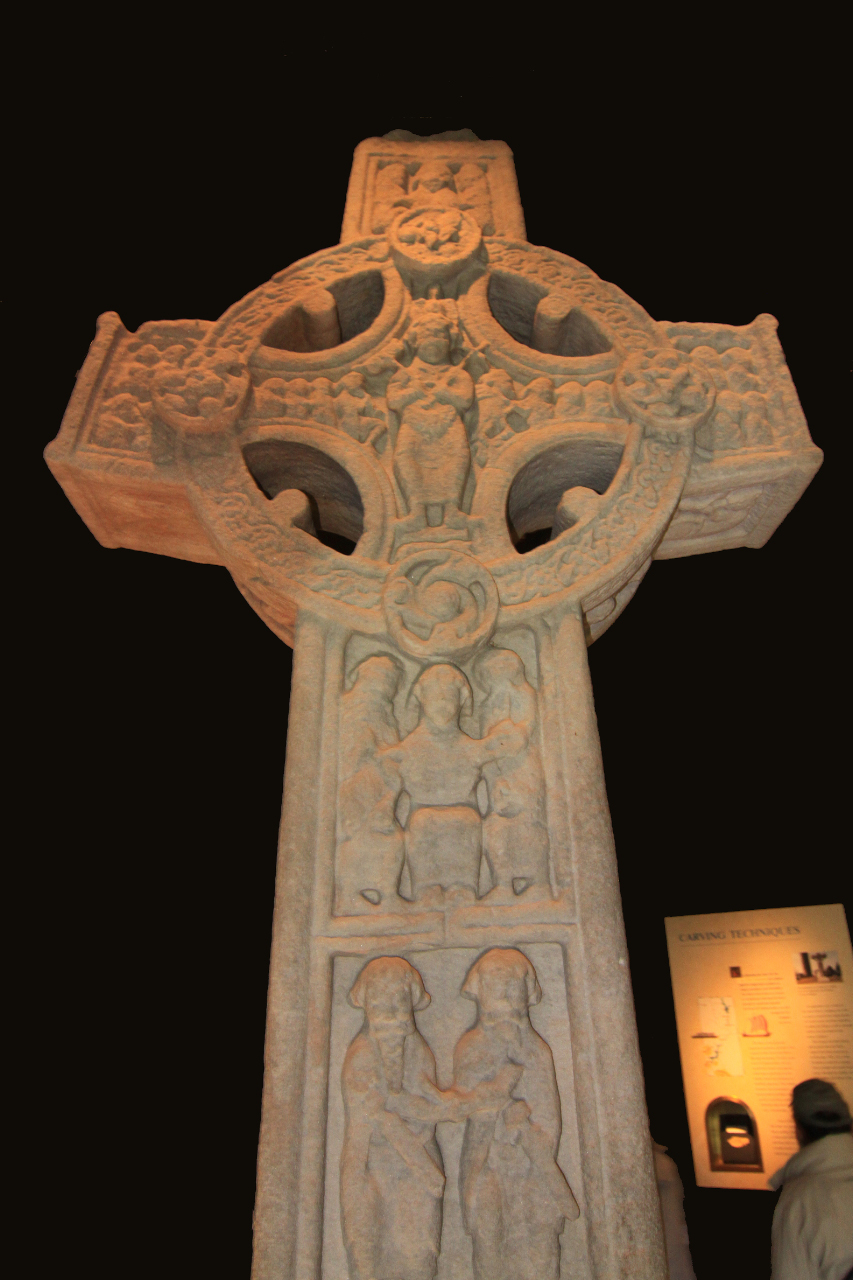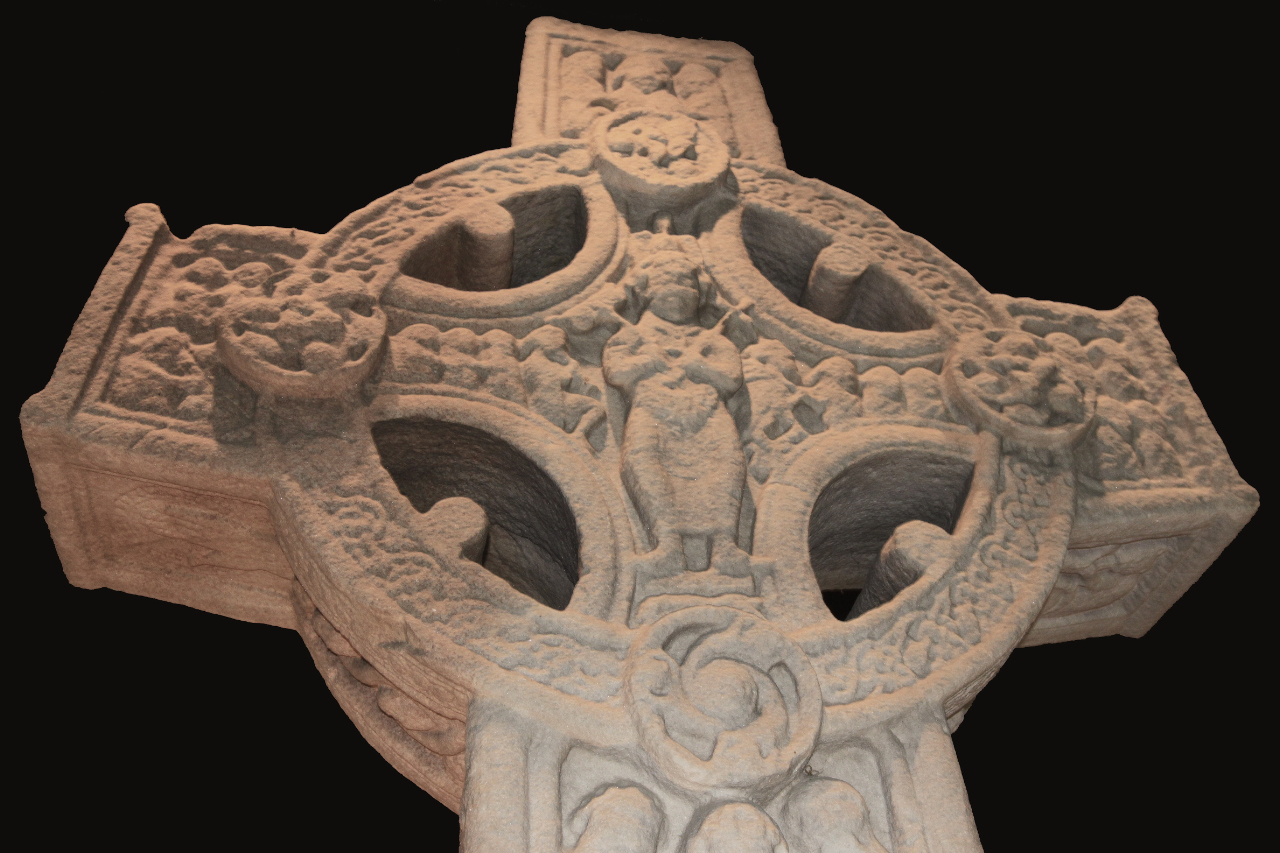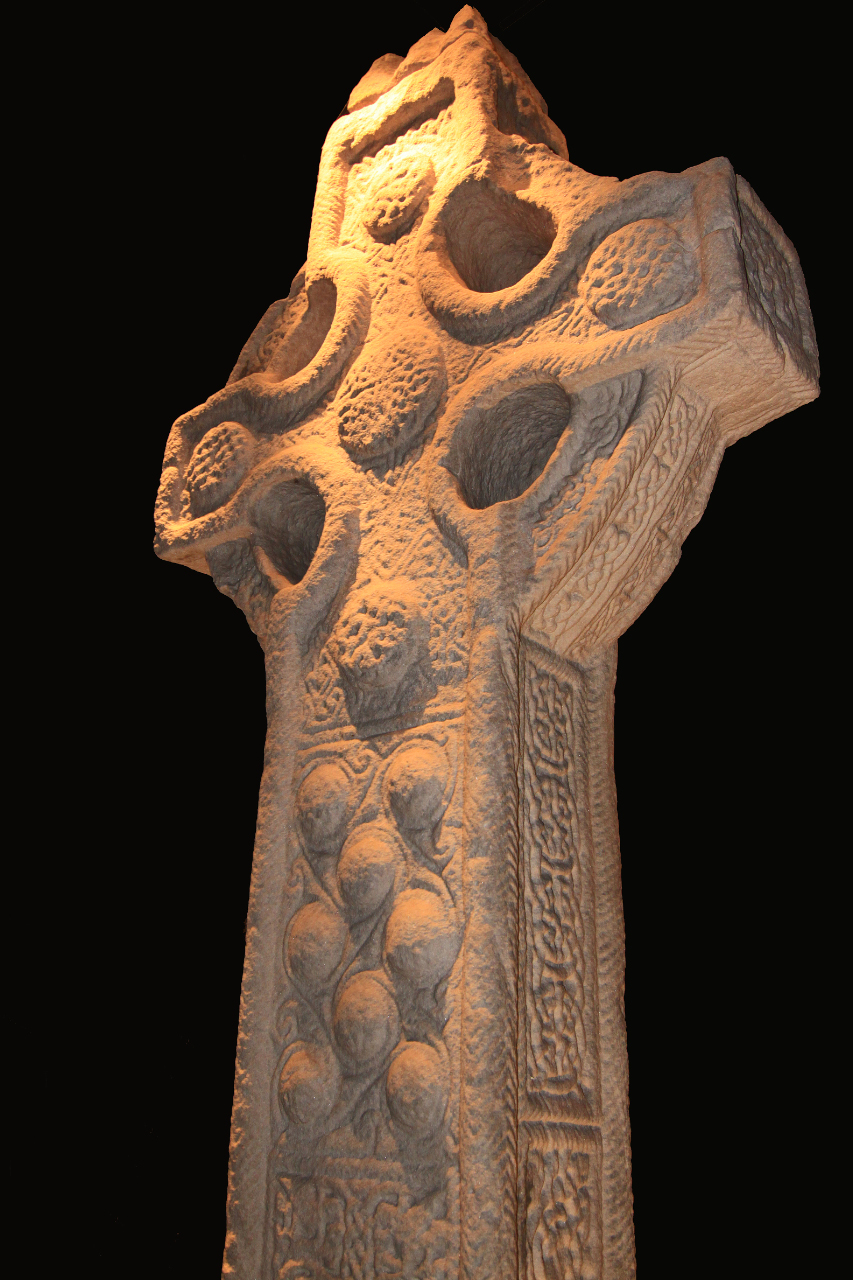Clonmacnoise (Irish: Cluain Mhic Nois, “meadow of the sons of Nos”) is a monastic site founded in 548 AD overlooking the River Shannon. The extensive ruins include a cathedral, castle, round tower, numerous churches, two significant high crosses, and a large collection of early Christian grave slabs. Religion was the central focus at Clonmacnoise. The largest of the many churches at Clonmacnoise is the Cathedral, originally built in 909 by the King of Tara and the Abbot of Clonmacnoise. The West door dates from about 1200 and is in the transitional style between Romanesque and Gothic. The North doorway features carvings of Sts. Dominic, Patrick and Francis. Like nearly all monastic settlements in Ireland, Clonmacnoise was plundered on several occasions by invaders, including the Vikings and Anglo-Normans. It then fell into decline from the 13th century onwards until it was destroyed in 1552 by the English garrison from nearby Athlone. We were fortunate to see this site, as it had been raining most of the day before we arrived. Still, the weather was damp and completely overcast, creating a solemn irish setting for this ancient Christian site. It made for some difficult photo shooting conditions, but we were just happy to be dry!
The high crosses on the grounds outside are replicas. The original high crosses have been moved in doors to protect them from the weather, which has slowly eroded the ornate limestone carvings over the centuries. Originally standing in front of the Cathedral was the Cross of the Scriptures, one of the finest high crosses in Ireland. Dating from about 900 AD, the cross stands 13 feet (4m) high and is divided into panels of sculptured biblical scenes, including a figure of the cruxification, in addition to portraits of the abbot and king who erected the cross and cathedral. Also preserved in the museum is the South Cross, standing about 12 feet (3.7m) high, and decorated in abstract, interlacing designs of spirals and bosses. It is thought to date from the early 9th century. These crosses are inside in a gallery setting and are brightly lit by incandescent lights. As a result, the crosses retain the warm glow of the lights, which I thought made for a pleasing photographic effect. I have taken one of the photos and desaturated the color, in order for you to see the true limestone color of the crosses. I also removed the light trusses from the background that were hanging directly above the crosses in order to give a better photographic presentation of the crosses. The sculptured structures are truly early art treasures!
